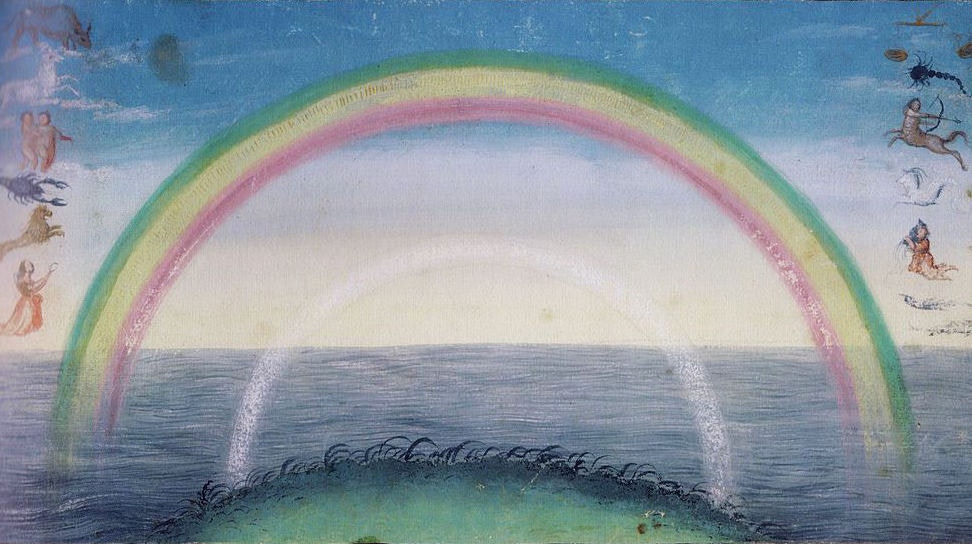Trick wrote:blue -sometime ago i read somewhere that in early christian times the color blue was the color of either the devils skin or 一of his garment, so the color in it self was seen as evil.
so from that angle the color what ever was its name was probably not to be mentioned in word or writing
I think we put the age of references somewhere around the 450 AD?
It could be that association is maybe informed by mold and psychoreactive/poisonous fungus.
Color and vision is fascinating to me, really.
My first computers had 16 colors, it could represent almost any color, but you could only have 16 different colors on screen at the same time.
If you wanted an image to look a certain way you had to swap the pallete and assign the particular color values you wanted to each "slot" in your pallete.
You could flip through the palletes and see the same image but colored in innumerable ways.
And speaking of palletes, what about palates?
Some people love cilantro, but some people are genetically predisposed to think it tastes like soap.
The colors we see aren't reality. They're light of a certain frequency stimulating organic structures in our eye, transmitted and interpreted by our brain.
Right of the bat it's lying to us because the image on our sense hardware is upside down. Our brain processes it into a right side up image.
So between the reality of an object, which existence itself is open for some debate but I'm not wandering into that, and what we see, there is a whole lot of room for interference.
Just look at the stupid internet "blue or gold dress" or whatever fads that come up occasionally.
I'm losing the point.
The point is, light of a certain frequency hits your rods and cones and you call it blue.
Same frequency hits mine and I also call it blue.
But who is to say that what we are seeing is the same? How similar are our pallets?
Is my blue of that frequency a little closer to purple? Is yours closer to green? Is it a completely DIFFERENT area and actually shows up as red?
What if what I see normally would seem to you to be like how infrared thermal vision is rendered? Or more like a blacklight?
We've all got our own unique tastes, preferences, and expressions of self. How much of that is due to reality just hitting a LITTLE BIT different for each of us?
Like we say "there's no accounting for taste" but what if there is? There is a genetic marker for the "cilantro tastes like soap" gene, as well as color blindness.
What if all matters of taste and aesthetics were ultimately genetic expressions?



